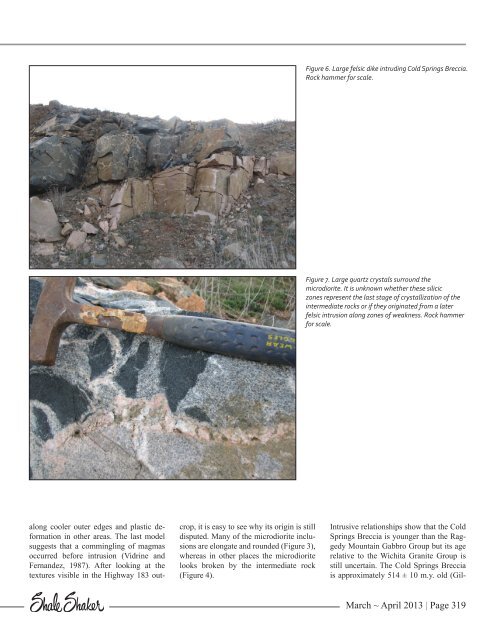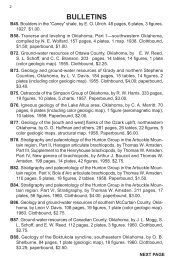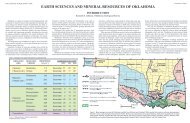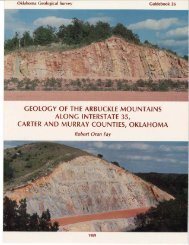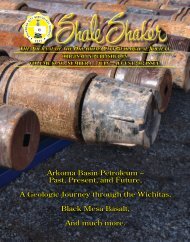My Favorite Outcrop: Cold Springs Breccia - Oklahoma Geological ...
My Favorite Outcrop: Cold Springs Breccia - Oklahoma Geological ...
My Favorite Outcrop: Cold Springs Breccia - Oklahoma Geological ...
You also want an ePaper? Increase the reach of your titles
YUMPU automatically turns print PDFs into web optimized ePapers that Google loves.
Figure 6. Large felsic dike intruding <strong>Cold</strong> <strong>Springs</strong> <strong>Breccia</strong>.<br />
Rock hammer for scale.<br />
Figure 7. Large quartz crystals surround the<br />
microdiorite. It is unknown whether these silicic<br />
zones represent the last stage of crystallization of the<br />
intermediate rocks or if they originated from a later<br />
felsic intrusion along zones of weakness. Rock hammer<br />
for scale.<br />
along cooler outer edges and plastic deformation<br />
in other areas. The last model<br />
suggests that a commingling of magmas<br />
occurred before intrusion (Vidrine and<br />
Fernandez, 1987). After looking at the<br />
textures visible in the Highway 183 outcrop,<br />
it is easy to see why its origin is still<br />
disputed. Many of the microdiorite inclusions<br />
are elongate and rounded (Figure 3),<br />
whereas in other places the microdiorite<br />
looks broken by the intermediate rock<br />
(Figure 4).<br />
Intrusive relationships show that the <strong>Cold</strong><br />
<strong>Springs</strong> <strong>Breccia</strong> is younger than the Raggedy<br />
Mountain Gabbro Group but its age<br />
relative to the Wichita Granite Group is<br />
still uncertain. The <strong>Cold</strong> <strong>Springs</strong> <strong>Breccia</strong><br />
is approximately 514 ± 10 m.y. old (Gil-<br />
March ~ April 2013 | Page 319


